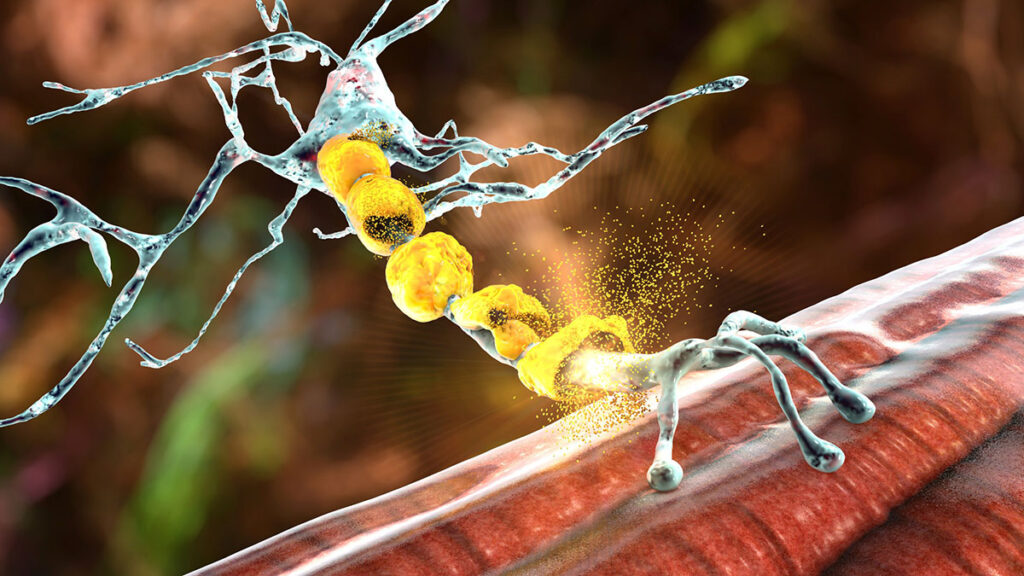This journey encompasses fostering inclusivity and understanding, acknowledging the diversity of experiences within the autism spectrum, and cultivating an environment that promotes enhanced mental health.
Recognising Autism Triggers
Providing inclusive and supportive environments for individuals with Autism Spectrum Disorder (ASD) is strongly connected to recognising autism triggers. Emotional triggers, often linked to sensory sensitivities, can vary widely among people on the spectrum. These triggers may manifest as heightened anxiety or discomfort in response to specific sounds, textures, or social situations. Understanding and respecting these individual differences is essential to fostering a more inclusive society and preventing self-injurious behaviour for autistic people. Moreover, recognising emotional triggers requires acknowledging the diverse range of mental health conditions that may coexist with autism. Tailoring support to address both autism-specific challenges and associated mental health conditions is critical to promoting overall well-being.

Physical signs can serve as valuable indicators when recognising autism triggers. Non-verbal signals, such as changes in body language or facial expressions, may signal an emotional reaction to certain stimuli. By paying attention to these subtle signs, caregivers, educators, and peers can better understand and respond to the unique needs of individuals on the autism spectrum. It’s essential to approach this process sensitively, recognising that an emotional reaction may not always be immediately apparent. Additionally, understanding that specific triggers may be linked to a traumatic event, whether known or not, underscores the significance of creating safe and supportive environments that prioritise emotional well-being for autistic individuals.
Identifying Signs of Crisis
Identifying signs of crisis, especially in individuals dealing with post-traumatic stress disorder (PTSD), requires the utmost understanding of the diverse ways people may express distress. Adopting inclusive language that acknowledges the varied experiences of people affected helps prevent common triggers, as specific triggers can deepen symptoms and lead to a crisis. For instance, a child’s behaviour may serve as a powerful indicator, manifesting in changes such as heightened anxiety, withdrawal, or increased irritability. Caregivers and educators must be attuned to these shifts, recognising them as potential signals of an underlying crisis.
Sensory overload is another critical factor to consider when identifying signs of crisis in autistic individuals. Being mindful of environments that may overwhelm the senses, such as crowded spaces or loud noises, is essential. Implementing trigger warnings in educational or communal settings can be a proactive measure to create a safer space. By fostering a supportive and inclusive environment, we can collectively contribute to a more empathetic approach to addressing the signs of crisis associated with autism.
Autistic people may exhibit signs of distress or crisis when exposed to potential triggers. Some common signs of a crisis include:
Meltdowns or Tantrums: Sudden and intense emotional outbreaks, often accompanied by a temper tantrum.
Withdrawal or Isolation: Individuals may seek to remove themselves from a triggering situation by withdrawing, isolating themselves, or finding a quiet space when they feel overwhelmed.
Communication Challenges: Difficulty expressing needs or emotions verbally or increased repetitive or self-stimulatory behaviours.
Sensory Overload: Overwhelmed by sensory stimuli, leading to heightened sensitivity to loud sounds, bright lights, textures, or smells.
Self-Injurious Behavior: In extreme cases, an individual may become aggressive towards others or engage in self-harming behaviours as a response to overwhelming triggers.
Regression in Skills: Reverting to behaviours typical of a younger age, such as loss of language skills or social regression.
Rigidity or Obsessive Behavior: A heightened focus on specific routines or interests, with resistance to changes or disruptions.
Elopement: Attempting to leave a situation, environment, or the presence of caregivers in response to distress.
Atypical Body Language: Avoiding eye contact, covering ears, or other physical indicators of discomfort.
Signs of Autistic Meltdown
Autistic meltdowns are overwhelming episodes triggered by intense emotions, during which the brain enters a fight-flight or freeze mode. This instinctive reaction, beyond the individual’s control, can manifest in various ways, highlighting the diverse nature of autistic meltdowns. These episodes may involve:
Expressing emotions physically
Releasing emotions through movement
Navigating emotional distress
Engaging in sensory behaviours
Expressing emotions verbally
Coping through object interaction
Momentarily disconnecting
Notably, the intensity of these behaviours varies. The need for recovery characterises the aftermath of an autistic meltdown. Autistic individuals may require time and space to regain emotional regulation, emphasising the importance of patience and understanding from those around them.
Despite the vivid nature of the experience, individuals often find it challenging to recall the details of what transpired during the meltdown. This further underscores these reactions’ neurological and involuntary nature, highlighting the significance of providing support and empathy during these challenging moments.


Strategies for De-escalation
De-escalation strategies play a distinctive role in supporting individuals during times of crisis by providing practical tools to manage triggers and promote a sense of calm. Autistic individuals may experience heightened sensitivities to stimuli, leading to overwhelming situations. Calming strategies, such as deep breathing exercises, sensory tools, and mindfulness techniques, can be instrumental in helping an autistic person regulate their emotions when confronted with triggers.
These coping strategies aim to redirect attention and provide a means for self-soothing, enabling the individual to navigate challenging situations more effectively.
Exposure therapy within a controlled and supportive environment can also be a valuable de-escalation approach. This involves gradually introducing stimuli associated with triggers to the autistic person, allowing them to build tolerance over time. However, it’s essential to implement exposure therapy with careful consideration, always respecting an individual’s pace and comfort levels. Moreover, incorporating trigger warnings and preparing the autistic person for potential triggers can be a preemptive measure in preventing a crisis. This advance notice allows the individual to mentally prepare, reducing the likelihood of feeling completely overwhelmed when faced with a triggering situation.
In times of crisis, it’s crucial to acknowledge the potential impact of a traumatic experience on an autistic person. Dealing with triggers may require a combination of calming strategies, coping mechanisms, and a supportive environment to foster a sense of security. These de-escalation strategies aim to empower autistic individuals to navigate their emotions effectively and build resilience in challenging circumstances.
The Significance of Clear and Effective Communication
Autistic individuals may experience challenges with interpreting social cues and understanding verbal communication, making it imperative to use straightforward language and visual aids. Providing explicit instructions and using visual supports, such as social stories or visual schedules, can enhance comprehension and help the individual better anticipate and respond to potential triggers. Clarity in communication facilitates a shared understanding of the situation and empowers the autistic person to express their needs and emotions more effectively.
In addition to verbal communication, non-verbal signals are essential in conveying information to autistic people. Employing consistent body language, facial expressions, and gestures can enhance the individual’s ability to interpret and respond appropriately. Caregivers, educators, and support workers must know the individual’s communication preferences and adapt their approach accordingly. Creating an environment that values clear and effective communication minimises the potential for misunderstandings and misinterpretations, contributing to a more supportive and responsive system when dealing with triggers and crises.
Importance of Health Care Professionals in Dealing with Crisis Situations
In navigating crisis situations, the significance of healthcare professionals and mental health crisis intervention becomes evident, particularly in their ability to understand and respond to the challenges individuals face. For instance, when working with an autistic person, understanding their unique needs is paramount. In situations that might be distressing, a trigger warning can be essential to prevent an intense response. Healthcare professionals equipped with knowledge and empathy can help reduce potential triggers and create an environment that minimises anxiety. They understand that overwhelming situations can lead to an increase in anxiety, particularly for autistic people, where a loss of control can be distressing. Healthcare professionals contribute significantly to helping individuals navigate these challenges by offering support and guidance.
In crisis situations, the ability of healthcare professionals to stay calm and provide reassurance becomes necessary. For an autistic person or anyone facing distress, the composure of a healthcare professional can serve as a stabilising force. The professionals’ expertise extends beyond physical well-being to encompass mental health, acknowledging that feelings of anxiety and loss of control can impact daily living. Through effective communication and tailored interventions, healthcare professionals address immediate concerns and foster a sense of safety and security. By recognising the potential triggers and responding appropriately, they create a therapeutic environment that acknowledges the unique needs of individuals, helping them navigate distressing situations with resilience and support.
Response Tips for Caregiver
Caregivers are at the forefront of supporting individuals, especially during crises. To enhance their effectiveness, caregivers must employ specific response tips that prioritise the well-being of people under their care, such as:
Maintain Open Communication: Foster an environment where individuals feel comfortable expressing their feelings and encourage open dialogue to understand their perspectives and concerns.
Educate Yourself: Take the time to educate yourself about the specific needs, triggers, and conditions of the individual you care for. This knowledge enables you to provide more informed and personalised support.
Respect Individual Differences: Understand that everyone copes differently, and tailor your approach to each individual’s unique needs and preferences.
Remain Calm: In crisis situations, maintain a calm and composed behaviour. Your emotional stability can positively impact the environment and reassure people in your care.
Encourage Coping Mechanisms: Encourage using coping mechanisms such as deep breathing exercises, grounding techniques, or other proven effective strategies for the individual’s emotional well-being.
Establish Routines: Consistency and routine can provide a sense of stability, especially during challenging times. Establishing and maintaining routines can contribute to a feeling of security.
Seek Professional Guidance: Recognise the importance of collaboration with healthcare professionals. Seek guidance when needed, ensuring that the individual receives comprehensive care.
Practise Self-Care: Take care of your own well-being to be in the best position to support others. Prioritise self-care activities that rejuvenate and maintain your mental and emotional health.
Adopt Flexibility: Be adaptable in your approach. Recognise that strategies that work in one situation may need adjustment in another. Flexibility allows you to respond more effectively to the dynamic nature of caregiving.


Autism Crisis Response with Leaf Complex Care
Leaf Complex Care delivers the right crisis response for autistic individuals, employing a person-centred approach to address their unique needs and challenges. Recognising the diverse spectrum of autism, the Rapid Response team undergoes specialised training to develop a deep understanding of sensory sensitivities, communication differences, and individual triggers.
In a crisis situation, our Rapid Response team utilises their expertise to de-escalate heightened emotions, employing calming techniques tailored to each person’s preferences. The crisis intervention also establishes a supportive environment, emphasising clear communication and predictable routines to reduce anxiety for families. Moreover, we collaborate with families and care recipients to create personalised crisis intervention plans, ensuring a proactive and tailored response to potential challenges.
With a commitment to empathy and a guaranteed turnaround time of 4 to 6 hours, we deliver our services with offices in Bristol, Birmingham, Slough and Somerset.







